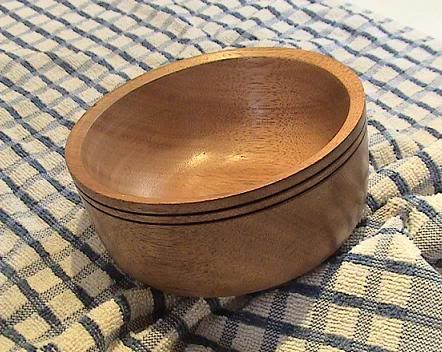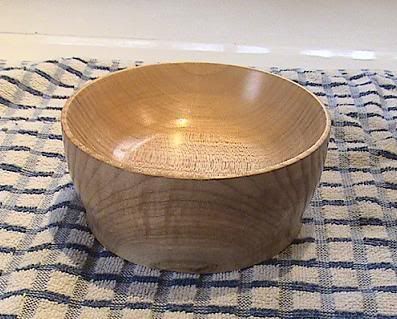Well Hello,
I have offically turned my first bowl. Wha-Hoo !!!! But I did have a scary moment when trying to part it. Granted my tools aren't the best, but its what I got. A cheap set from HF. The parting tool itself is a 1/8", but the shaft of it is also very narrow, I guess is the term. Probably a 1/4" wide.
So as I got to the point of needing to part the bowl, I figured I needed to drop the speed. Wasn't sure but it was a gut feeling. So I put it on the lowest speed I have which is like 1150 roughly. Its a Central Machinery from, guess where, HF. you say !!
you say !!
As I part it till it gets about 1" thick and wham, the bowl tears off and flies to the floor. I was going to stop it there and pry it off with a flat head screwdriver or chisel, but it flew before I could get the tool released.
How do I keep this from happening in the future and was the speed wrong? Do I need to part during a faster setting? The bowl is about 4.5 -5" at the base. Pretty small bowl of Fig. Maple. Do I of course need a better stronger stiffer tool?
Do I need to part during a faster setting? The bowl is about 4.5 -5" at the base. Pretty small bowl of Fig. Maple. Do I of course need a better stronger stiffer tool?
That seems to be the nerve racking part of the turning until I get used to it I guess. Any advise or article to read would be greatly appreciated.
Thanks for your time. Happy Holidays to all.
Ray
~Gothyc Designs
P.S. The bowl is fine and landed in a pile of shavings. some small scratches but fixable.
I have offically turned my first bowl. Wha-Hoo !!!! But I did have a scary moment when trying to part it. Granted my tools aren't the best, but its what I got. A cheap set from HF. The parting tool itself is a 1/8", but the shaft of it is also very narrow, I guess is the term. Probably a 1/4" wide.
So as I got to the point of needing to part the bowl, I figured I needed to drop the speed. Wasn't sure but it was a gut feeling. So I put it on the lowest speed I have which is like 1150 roughly. Its a Central Machinery from, guess where, HF.
As I part it till it gets about 1" thick and wham, the bowl tears off and flies to the floor. I was going to stop it there and pry it off with a flat head screwdriver or chisel, but it flew before I could get the tool released.
How do I keep this from happening in the future and was the speed wrong?
That seems to be the nerve racking part of the turning until I get used to it I guess. Any advise or article to read would be greatly appreciated.
Thanks for your time. Happy Holidays to all.
Ray
~Gothyc Designs
P.S. The bowl is fine and landed in a pile of shavings. some small scratches but fixable.


